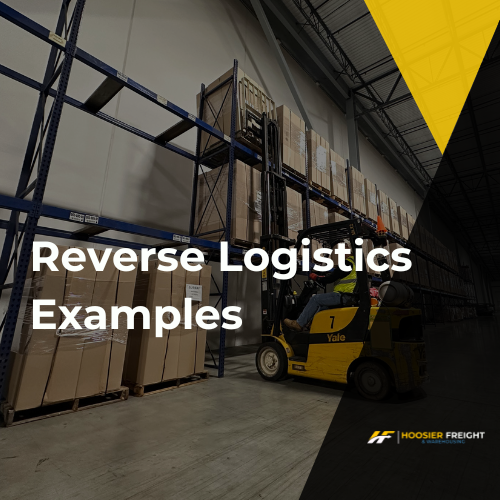
Reverse Logistics Examples
In today’s business world, the term “reverse logistics” has become increasingly significant. But what exactly does it entail? Reverse logistics involves the process of moving goods from their final destination back to the manufacturer or distributor for returns, repairs, recycling, or disposal. While traditional logistics focuses on getting products to the consumer, reverse logistics is all about the flow back. Understanding reverse logistics examples can help illustrate how companies manage this crucial aspect of their operations.
One common example of reverse logistics is the return of defective products. Imagine you’ve bought a new laptop that, unfortunately, stops working within a week. The retailer you purchased it from would initiate a reverse logistics process to handle the return. The laptop would be sent back to the manufacturer, where it would be inspected, repaired if possible, and then either resold as refurbished or disposed of responsibly. This process not only helps in customer satisfaction by ensuring defective products are swiftly dealt with but also allows companies to recover value from returned goods.
Another example is the recycling of electronic waste. With the rapid advancement of technology, many consumers find themselves with outdated electronics, such as old smartphones or computers. Companies like Apple have implemented robust reverse logistics programs to manage this e-waste. When customers trade in their old devices, Apple takes them back, salvages usable parts, recycles valuable materials like metals, and ensures environmentally friendly disposal of hazardous components. This not only reduces environmental impact but also recovers valuable materials that can be used in the manufacturing of new products.
Retail giants like Amazon and Walmart showcase another reverse logistics scenario through their extensive return policies. During peak seasons like the holiday period, these companies handle millions of returns. Items ranging from clothing to electronics are sent back by customers. The reverse logistics process here involves sorting these returned items, inspecting them for quality, and determining whether they can be restocked, sold at a discount, or sent to liquidation. Efficient handling of returns is vital for maintaining inventory accuracy and minimizing losses.
The automotive industry also heavily relies on reverse logistics. Consider the recall of defective vehicle parts. When an issue is identified, manufacturers initiate a recall, asking customers to bring in their vehicles for part replacement. The defective parts are then shipped back to the manufacturer or a designated facility where they are either repaired or recycled. This ensures safety standards are upheld and helps companies mitigate potential legal and reputational risks.
A more environmentally focused example is the return and recycling of packaging materials. Many companies are now encouraging customers to return packaging materials for reuse. For instance, some retailers provide drop-off points for customers to return used boxes and packaging peanuts. These materials are then collected, checked for quality, and either reused for future shipments or recycled. This practice not only reduces waste but also lowers the cost of packaging materials for the company.
Understanding these reverse logistics examples highlights the critical role this process plays in various industries. From ensuring customer satisfaction through efficient returns and repairs to promoting sustainability through recycling initiatives, reverse logistics helps companies manage their resources more effectively and responsibly. As businesses continue to evolve, the importance of reverse logistics will only grow, making it a crucial element of modern supply chain management.
Contact Hoosier Freight and Warehousing today to learn more about our reverse logistics process and partnerships.



